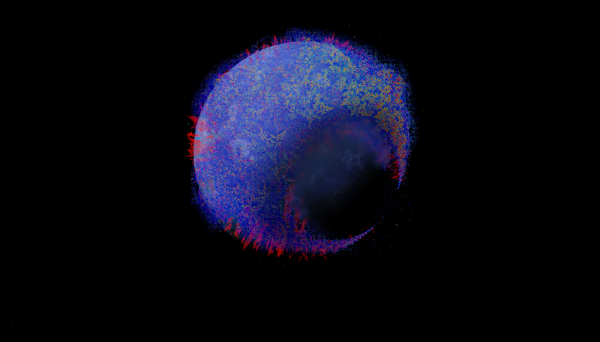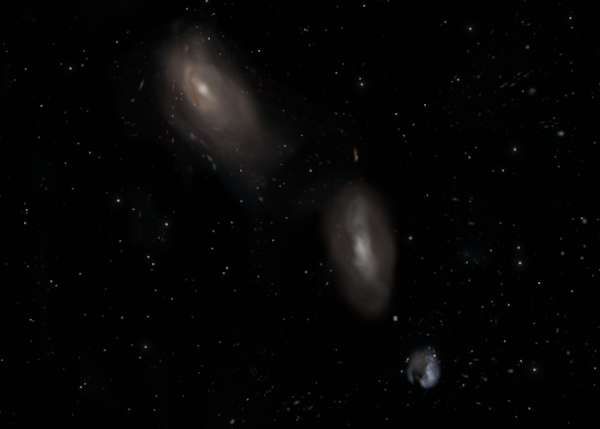BY LETTER
Sextans Swarmers
Sophonts > Xenosophonts > Alien Civilisations Outside the Terragen Sphere
Science > Sophontology > Xenology
Sophonts > Xenosophonts
Science > Sophontology > Xenology
Sophonts > Xenosophonts
Machine ecology in the Sextans A dwarf galaxy | |
 Image from Steve Bowers | |
| A planet infected by the Sextans Swarm, covered by a machinecology to a depth of several hundred kilometres | |
The galaxy NGC 3169 is 75 million light years from Sol and 42000 light years in radius. Most of the systems in this galaxy have been colonised by an artificial, technologically advanced swarm of an unknown origin. Numerous planets and asteroids in each system are surrounded by a diverse machinecology, which has spread to several new systems during the period that Terragen observers have been watching the region. The swarm is apparently spread by probes or seedships which are too small to be easily observed at this distance. No macroscopic biont lifeforms have been observed in the infected systems.
 Image from Steve Bowers | |
| NGC 3169 is the galaxy at the top, and is gradually being disrupted by a collision with the neighbouring galaxy NGC 3166. At the bottom is the small galaxy NGC 3165, which shows no sign of Swarmer infestation yet. | |
What seem to be a smaller number of similar machinecologies have been detected in the nearby NGC 3166, showing that the swarm elements have been able to make the journey of 160 thousand light years separating the two galaxies. An important fact to remember is that an observer in the Terragen Sphere can only see events in these three galaxies which occurred 75 million years ago.
Related Articles
Appears in Topics
Development Notes
Text by M. Alan Kazlev
Updated 2024 by Orion's Arm Editors
Initially published on 31 December 2001.
Updated 2024 by Orion's Arm Editors
Initially published on 31 December 2001.






